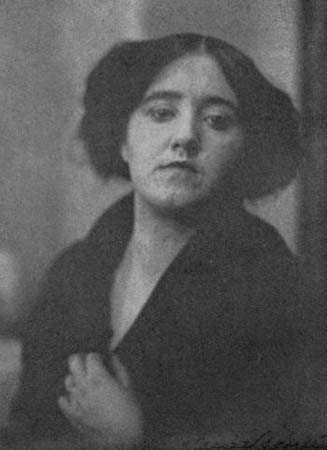She is not going to give up.
Playwright and co-founder of the Abbey Theatre, Lady Augusta Gregory, 68, is determined that the extensive art collection owned by her nephew, the late Sir Hugh Lane, only 39 when he went down on the RMS Lusitania, will go to the city of Dublin.

Sir Hugh Lane
To show his anger at the Dublin City Corporation for making it so difficult for him to create a gallery to hold his collection, Lane had withdrawn his offer and changed his will to bequeath the art to the National Gallery in London.
However, just before he boarded the Lusitania in New York City, back in May of 1915, he had a change of heart and wrote out a codicil to the will, giving the paintings to Dublin. He carefully initialled each page, but neglected to have the document witnessed.
And so the battle wages on between Dublin and London. With Augusta in the middle.
She has enlisted the support of her fellow founder of the Abbey, poet and playwright W B Yeats, 55. A few years ago, Willie had written a poem, “To a Shade,” chastising the Dublin newspaper owner who was leading the assault against this generous gift from a generous man:
“And insult heaped upon him for his pains,
And for his open-handedness, disgrace;
Your enemy, an old foul mouth, had set
The pack upon him.”
The critics point out that living conditions in Dublin tenements are appalling; why should money be spent for rich men’s art?
In the poem Yeats counters by pointing out that art in a public gallery will give the Irish
“…loftier thought,
Sweeter emotion, working in their veins.”
But by now, even Yeats is ready to give up the fight.
Not Augusta.
This summer, staying in Lane’s London flat in Cheyne Walk, she is corresponding with anyone who can possibly help. In June alone she has written to Irish painters and sculptors who would want to have their work included in a Dublin gallery alongside the major French Impressionists Lane specialized in.

100 Cheyne Walk, Chelsea
Lady Gregory has even written to blatant unionists like Sir Edward Henry Carson, 66, head of the Irish Unionist Party, hoping he could serve as a go-between. She has heard back from museum curators, aristocrats, trustees of the London National Gallery, and even the recent UK Chief Minister for Ireland Ian MacPherson, 40.
No progress.
Having just two years ago lost her only son, Robert, 36, when he was shot down by friendly fire in Italy, Augusta is not ready to give up on the last wishes of her favorite nephew.
Not yet. Not ever.
“Such Friends”: 100 Years Ago… is the basis for the book, “Such Friends”: The Literary 1920s, to be published by K. Donnelly Communications. For more information, email me at kaydee@gypsyteacher.com.
My “Such Friends” presentations, The Founding of the Abbey Theatre, and Dorothy Parker and the Algonquin Round Table, are available to view for free on the website of the PICT Classical Theatre.
If you want to walk with me through Bloomsbury, you can download my audio walking tour, “Such Friends”: Virginia Woolf and the Bloomsbury Group.
This fall I will be talking about writers’ salons in Ireland, England, France and America before and after the Great War in the Osher Lifelong Learning programs at the University of Pittsburgh and Carnegie-Mellon University.
Manager as Muse, about Scribner’s editor Maxwell Perkins’ relationships with F. Scott Fitzgerald, Ernest Hemingway and Thomas Wolfe, is available on Amazon in both print and Kindle versions.







